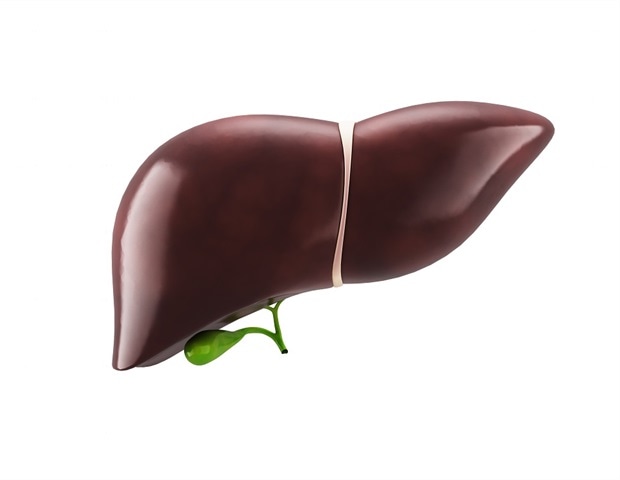A study published in JAMA Network Open reveals that about 5% of U.S. adults are exposed to six potentially hepatotoxic botanicals, which are largely unregulated products typically used to improve health or treat minor health complications.
Background The use of herbal and dietary supplements (HDSs) is increasing exponentially worldwide because of their perceived health benefits. More than 80,000 such products are available at various unregulated retail outlets and can be purchased without a prescription. Multivitamins, minerals, vitamin D, omega-3 fatty acids, and calcium form the largest group of herbal and dietary supplements.

These products do not require approval from the U.S. Food and Drug Administration (FDA) prior to marketing, leading to a lack of safety and efficacy assessments.
Existing observational study findings indicate that the proportion of drug-induced liver injury (DILI) cases from herbal and dietary supplements has increased from 7% in 2005 to 20% in 2014 in the United States. These studies have identified turmeric, kratom, green tea extract, and Garcinia cambogia as the most commonly implicated botanicals with severe to fatal liver injury-inducing effects. In the current study, scientists have determined population-level estimates of exposure to six potentially hepatotoxic botanicals, including turmeric or curcumin, green tea, Garcinia cambogia , black cohosh, red yeast rice, and ashwagandha.
Study design This survey study analyzed data from the National Health and Nutrition Examination Survey (NHANES), which is a nationally representative survey aiming to periodically monitor the health and nutrition of the U.S. general population.
Data from more than 9,500 US adults were analyzed in this study, which included prescription drug and herbal and dietary supplement exposure data in the past 30 days. The participants were enrolled in the NHANES between January 2017 and March 2020. Due to the COVID-19 pandemic, data collection for the NHANES 2019-2020 cycle was interrupted.
Data from the 2020 U.S. Census was used to estimate the population size.
The prevalence and clinical characteristics of herbal and dietary supplement users and users of six potentially hepatotoxic botanicals were compared with non-users. Important observations Among 9,685 adult participants, about 58% reported consuming herbal and dietary supplements at least once within the past 30 days. Related Stories Study identifies non-statin cholesterol drugs with potential to lower liver cancer risk Existing drug shows promise for treating common liver disease Inflammation may not be key to fighting liver fibrosis in MAFLD Regarding sociodemographic characteristics, herbal and dietary supplement users were significantly more likely to be older, female, non-Hispanic White, married, and have a higher educational and socioeconomic background compared to non-users.
Regarding pre-existing health conditions, a significantly higher prevalence of hypertension, diabetes, coronary heart disease, stroke, arthritis, thyroid disorder, cancer, or liver complications was observed among herbal and dietary supplement users compared to that among non-users. Exposure to hepatotoxic botanicals About 4.7% of participants reported consuming at least one of the six selected potentially hepatotoxic botanicals within the past 30 days.
The most commonly consumed potentially hepatotoxic botanicals were turmeric and green tea, followed by Ashwagandha, Garcinia cambogia , red yeast rice, and black cohosh. Compared to participants who did not use herbal and dietary supplements, potentially hepatoxic botanicals users were significantly more likely to be older, female, non-Hispanic White, married, and have higher educational and socioeconomic background. Regarding pre-existing health conditions, hepatotoxic botanicals users were significantly more likely to have arthritis, thyroid disorder, and cancer and significantly more likely to be taking a prescription medication compared to non-users of herbal and dietary supplements.
Reasons for using hepatotoxic botanicals The majority of participants reported consuming hepatotoxic botanicals without any recommendations from their healthcare providers. The most commonly reported reasons for the use were health improvement, disease prevention, and immunity boosting. Other reasons were arthritis improvement (reported by turmeric users), energy level improvement (reported by green tea users), weight loss purpose (reported by Garcinia cambogia users), hot flash treatment (reported by black cohosh users), and heart health improvement (reported by red yeast rice users).
Population-level exposure to potentially hepatotoxic botanicals The extrapolation of study findings revealed that about 15.6 million U.S.
adults consumed at least one of the six selected potentially hepatotoxic botanicals within the past 30 days, which was similar to the estimated number of U.S. adults who consumed nonsteroidal anti-inflammatory drugs and a commonly prescribed lipid-lowering drug.
Study significance The study finds a considerably high prevalence of potentially hepatotoxic botanicals use among U.S. adults between 2017 and 2020.
This highlights the urgent need for increasing regulatory oversight on the manufacturing and testing of botanical products. The use of herbal and dietary supplements in the U.S.
has been found to be associated with an estimated 23,000 annual emergency department visits and 2,154 hospitalizations in 2014. The use of these products has also been found to be associated with more than 20% of all drug-induced liver injury cases in the U.S.
Given the lack of regulatory oversight on botanicals, scientists advise clinicians to obtain a complete medication and botanicals use history when evaluating patients with unexplained symptoms or liver test abnormalities. Likhitsup A. 2024.
Estimated Exposure to 6 Potentially Hepatotoxic Botanicals in U.S. Adults.
JAMA Network Open. https://jamanetwork.com/journals/jamanetworkopen/fullarticle/2821951.

















